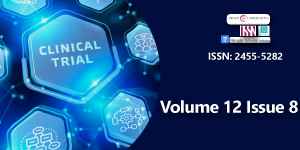Role of viruses in biosphere (in connection with phenomena of COVID)
Main Article Content
Abstract
The purpose of the work is to consider the basics and methods of assessing the consequences for society of the unprecedented situation of 2020-2022 associated
with the spread of the coronavirus infection and a set of reasonable and unjustifi ed measures for its prevention. The problem can be considered in the context of
fundamental sciences, such as biosphere ecology, the doctrine of the noosphere, and sociobiology. The principle of constancy, proposed by Vladimir Vernadsky, is of great
importance. According to this principle, the biosphere is extremely stable, and even the most extreme infl uences cannot disrupt its equilibrium. From the standpoint of
global ecology, the situation with the spread of the virus is a standard form of the relationship of species in the biosphere, and serious medical and biological consequences
for humanity should not have occurred. However, the social consequences of infection were extremely high. The work is an attempt to quantify and qualitatively assess
these consequences and identify ways to overcome the negative consequences of the spread of infections in the future. The basis for the development of such a strategy
should be fundamental knowledge in the fi eld of global ecology and the science of sociobiology, which studies the laws of the relationship between the social and
biological components of man.
Downloads
Article Details
Copyright (c) 2025 Sapunov VB.

This work is licensed under a Creative Commons Attribution 4.0 International License.
Wikipedia contributors. COVID-19 [Internet]. Wikipedia; 2025. Available from: https://ru.wikipedia.org/wiki/COVID-19
Vernadsky VI. Biosphere and noosphere. Moscow: Rolf; 2002;506.
Sapunov VB, Uglov MV. Harmony and longevity. 3rd ed. Saint Petersburg: Khimizdat; 2012;216.
Sapunov VB. Lie, destruction and genocide in world history. Saint Petersburg: Gamma; 2020;136.
Ovcharov KE. Dmitry Ivanovsky. 1864–1920. Moscow: Publishing House of the Academy of Sciences of the USSR; 1952;103.
Golubovsky MD. The century of genetics: evolution of ideas and terms. Moscow: Borey Art; 2000;262.
Slama K. Insect endocrinology: a tribute to Stefan Kopec. In: Insects: Chemical, physiological, and environmental aspects. Wroclaw: Wydawnictwo Universytetu Wroclawskiego; 1994;11–16.
Sapunov VB, Glazyrina TM. 10 billion gold. Saint Petersburg: Politek-Press; 2019;88.
Sapunov V. Real need of the world in food. A future of agricultural production. In: Popescu GH, editor. Handbook of research on globalized agricultural trade and new challenges for food security. Hershey (PA): IGI Global; 2020. Chapter 1;1–12.
Available from: https://www.igi-global.com/chapter/real-need-of-the-world-in-food/234269
Gause GF. The struggle for existence. New York: Academic Press; 1934;230.
Available from: https://sites.science.oregonstate.edu/~deleenhp/teaching/fall15/MTH427/Gause-The-Struggle-for-Existence.pdf
World Health Organization (WHO). Top ten causes of death [Internet]. Geneva: WHO. Available from: https://www.who.int/ru/news-room/fact-sheets/detail/the-top-10-causes-of-death
Waddington CH. Tools for thought. London: Jonathan Cape Ltd.; 1977;320.
Sapunov VB. Criteria of ecological pressure on agricultural systems. In: Proceedings of the 15th International Congress on Agricultural Mechanization and Energy in Agriculture (AnKagEng); 2023; Ankara, Turkey. Cham: Springer; 2023;217–226. Available from: http://dx.doi.org/10.1007/978-3-031-51579-8_21

